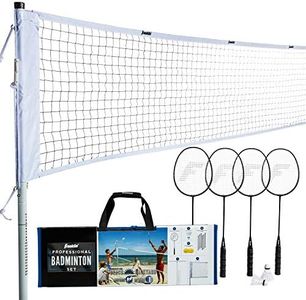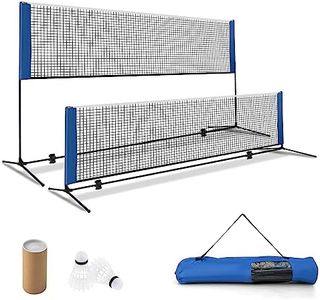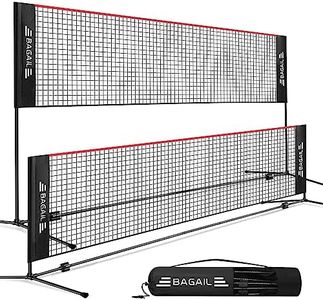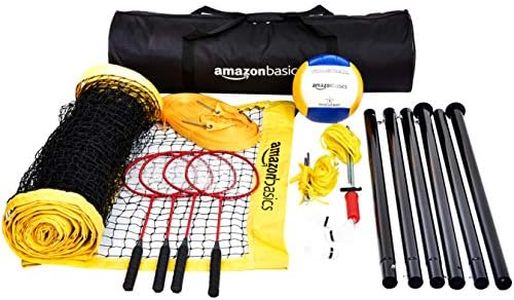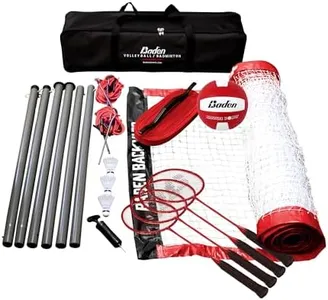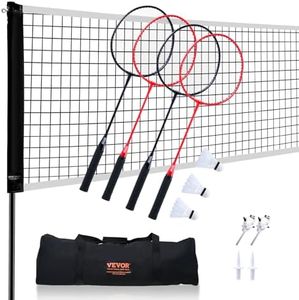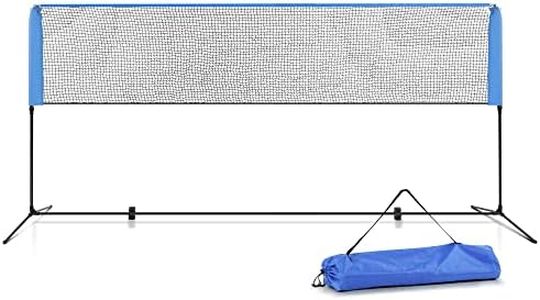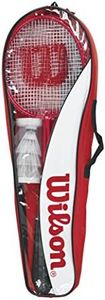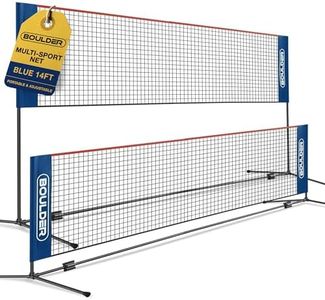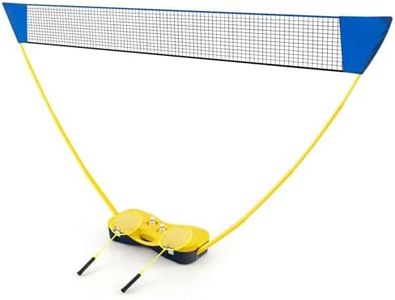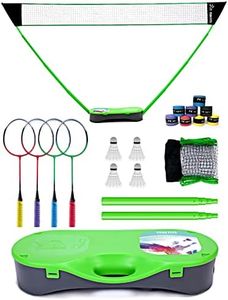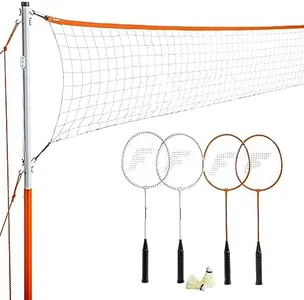We Use CookiesWe use cookies to enhance the security, performance,
functionality and for analytical and promotional activities. By continuing to browse this site you
are agreeing to our privacy policy
10 Best Badminton Nets
From leading brands and best sellers available on the web.Buying Guide for the Best Badminton Nets
When you're looking to buy a badminton net, it's important to understand that the net serves as a central element of the game, providing a clear boundary and maintaining fairness. The key to choosing the right net is knowing where you'll use it—indoors or outdoors, for casual games or competition—and making sure it meets your needs for portability, durability, and setup. By focusing on essential features, you can ensure you'll enjoy smooth, fun games instead of getting frustrated by saggy or short-lived nets.Net MaterialThe net material refers to what the net is made from. Common materials are nylon, polyester, or sometimes cotton. This is important because it determines how durable the net is and how well it withstands wear or outdoor weather conditions. Nylon is lightweight and resistant to weather, making it great for outdoor or frequent use. Polyester is strong and doesn't sag much over time, while cotton may be softer but isn't as durable. For backyard or occasional use, nylon or cotton might work, but for regular play or outdoor conditions, polyester is usually the best choice.
Net Size and HeightThe net size, including its width and height, defines how closely it matches official standards. For standard play, the official height at the center is 1.524 meters (5 feet), and the net should be about 6.1 meters (20 feet) long. This matters because using a too-short or too-tall net can affect gameplay and rules. For serious or tournament use, choose a net matching these specifications. For kids or casual backyard games, smaller sizes can be easier and more fun to set up.
Mesh SizeMesh size refers to the size of the individual holes or squares in the net. Regulation badminton nets have a mesh not exceeding 20 mm (about 0.8 inches). Mesh that's too large can let shuttles pass through, which is frustrating during play. Opt for a regulation mesh for proper games, but for children's fun or recreational use, slightly larger mesh may be acceptable if cost or portability is a concern.
Cord or Cable TypeThe top of the net is often reinforced with a cord or cable, which helps the net stay taut. Steel cables are sturdy and keep the net level for a long time but require solid poles and fixtures. Nylon or synthetic cords are common in portable nets and are easier to work with but may not stay as tight. For permanent setups or clubs, steel is better; for quick, backyard use, nylon is more practical.
Portability and SetupPortability describes how easy it is to pack up, move, and set up the net. Some nets come with lightweight frames, quick-assembly poles, and carrying bags, perfect for taking to the park or beach. Others are more permanent with heavier poles and need to be fixed in place. If you plan to move the net often or want something for travel, prioritize lightweight and tool-free setup designs. For a fixed court, solid, anchored nets may be preferable.
Pole Strength and StabilityThe poles support the net and keep it upright. Strong materials like steel or aluminum ensure the net stays stable and upright even with repeated use or wind. Plastic poles are lighter and easier to carry but may bend or topple on uneven ground or in windy conditions. Choose robust poles if the net will see a lot of use or if you want a stable setup, and go lighter if you want an easily portable recreational net.
